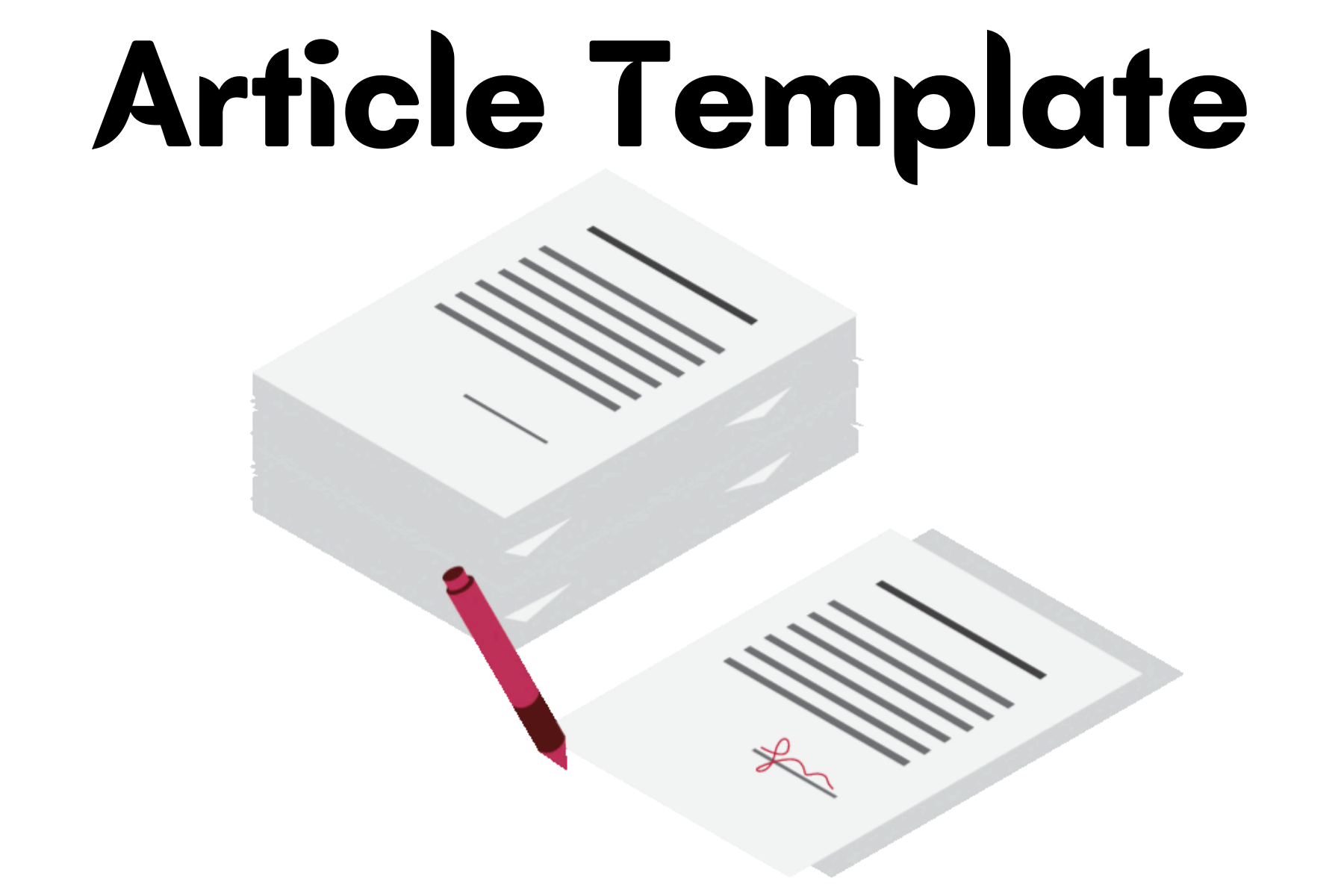Junior High School Students' Proportional Reasoning Ability in the Domain Comparison: A Gap in Results Between Indicators
DOI:
https://doi.org/10.18326/hipotenusa.v6i1.1892Keywords:
comparison, junior high school, proportional reasoning, proportion, ratioAbstract
The purpose of this study was to analyze students' proportional reasoning ability. The research subjects consisted of 21 students of VIII class in one of the public junior high schools in Semarang City who had obtained comparison materials (ratio and proportion). Data collection used test instruments that were developed based on indicators of proportional reasoning ability consisting of 6 questions. The data were analyzed qualitatively with data reduction analysis procedures, data presentation, and conclusion drawing/verification. The results showed that (1) none of the students met all the indicators of proportional reasoning ability, namely the ability to understand proportional relationships, solve proportional problems of missing values, numerical comparisons, qualitative predictions, distinguish proportional and non-proportional problems, and solve proportional relationships of inverse values, (2) all students have been able to understand proportional relationships, but they are still very limited in their ability to distinguish proportional and non-proportional problems, and solve proportional relationships of inverse value, and (3) the strategy most often used by students to solve proportional reasoning problems is the cross-multiplication strategy.
References
Agustin, R. D. (2016). Kemampuan penalaran matematika mahasiswa melalui pendekatan problem solving. Jurnal Pedagogia, 5(2), 179–188. https://doi.org/https://doi.org/10.21070/pedagogia.v5i2.249
Andrusiak, R. (2007). Proportional reasoning: A research based unit of study for middle school teachers. https://www.researchgate.net/publication/339415305%0AProportional
Arican, M. (2018). Preservice middle and high school mathematics teachers’ strategies when solving proportion problems. International Journal of Science and Mathematics Education, 16(2), 315–335. https://doi.org/10.1007/s10763-016-9775-1
Arican, M. (2019). A diagnostic assessment to middle school students’ proportional reasoning. Turkish Journal of Education, 8(4), 237–257. https://doi.org/10.19128/turje.522839
Arshad, M. N., Atan, N. A., Abu, M. S., Abdullah, A. H., & Mokhtar, M. (2017). Improving the reasoning skills of students to overcome learning difficulties in additional mathematics. In Man in India (Vol. 97, Issue 17, pp. 41–52). https://doi.org/10.37134/jsml.vol5.3.2017
Avcu, R., & Doğan, M. (2014). What are the strategies used by seventh grade students while solving proportional reasoning problems? International Journal of Educational Studies in Mathematics, 1(2), 34–55. https://doi.org/10.17278/ijesim.2014.02.003
Ayan, R., & Isiksal-Bostan, M. (2019). Middle school students’ proportional reasoning in real life contexts in the domain of geometry and measurement. International Journal of Mathematical Education in Science and Technology, 50(1), 65–81. https://doi.org/10.1080/0020739X.2018.1468042
Ayuningtyas, G. F. (2019). Peningkatan kemampuan penalaran proporsional dan pencapaian self-regulated learning siswa sekolah menengah pertama melalui problem-based learning ditinjau dari gaya kognitif [Universitas Pendidikan Indonesia]. http://repository.upi.edu/40187/
Ben-Chaim, D., Keret, Y., & Ilany, B.-S. (2012). Ratio and proportion: Research and teaching in mathematics teachers’ education (pre- and in-service mathematics teachers of elementary and middle school classes). Sense Publishers. https://doi.org/10.1007/978-94-6091-784-4
Carney, M., Paulding, K., & Champion, J. (2022). Efficient assessment of students’ proportional reasoning. Applied Measurement in Education, 35(1), 46–62. https://doi.org/10.1080/08957347.2022.2034825
Cramer, K., Post, T., & Graeber, A. O. (1993). Connecting research to teaching: Proportional reasoning. The Mathematics Teacher, 86(5), 404–407. https://doi.org/https://doi.org/10.5951/MT.86.5.0404
Creswell, J. W. (2012). Educational research: Planning, conducting, and evaluating quantitative and qualitative research (4th ed.). Pearson.
Creswell, J. W., & Creswell, J. D. (2022). Research design: Qualitative, quantitative, and mixed methods approaches (6th ed.). Sage Publications, Inc. https://us.sagepub.com/en-us/nam/research-design/book270550
Dole, S., Clarke, D., Wright, T., & Hilton, G. (2012). Students’ proportional reasoning in mathematics and science. Proceedings of the 36th Conference of the International Group for the Psychology of Mathematics Education, 2, 195–202.
Ekawati, R., Lin, F. L., & Yang, K. L. (2015). Developing an instrument for measuring teachers’ mathematics content knowledge on ratio and proportion: A case of Indonesian primary teachers. International Journal of Science and Mathematics Education, 13(1), 1–24. https://doi.org/10.1007/s10763-014-9532-2
Geçici, M. E., & Türnüklü, E. (2021). Visual Reasoning in Mathematics Education: A Conceptual Framework Proposal. Acta Didactica Napocensia, 14(1), 115–126. https://doi.org/10.24193/adn.14.1.9
Hasanah, S. I., Tafrilyanto, C. F., & Aini, Y. (2019). Mathematical reasoning: The characteristics of students’ mathematical abilities in problem solving. Journal of Physics: Conference Series, 1188(1). https://doi.org/10.1088/1742-6596/1188/1/012057
Hino, K., & Kato, H. (2019). Teaching whole-number multiplication to promote children’s proportional reasoning: A practice-based perspective from Japan. In ZDM. Springer. https://doi.org/10.1007/s11858-018-0993-6
Hjelte, A., Schindler, M., & Nilsson, P. (2020). Kinds of mathematical reasoning addressed in empirical research in mathematics education: A systematic review. Education Sciences, 10(10), 1–15. https://doi.org/10.3390/educsci10100289
Im, S., & Jitendra, A. K. (2020). Analysis of proportional reasoning and misconceptions among students with mathematical learning disabilities. Journal of Mathematical Behavior, 57(1), 1–20. https://doi.org/10.1016/j.jmathb.2019.100753
Jeannotte, D., & Kieran, C. (2017). A conceptual model of mathematical reasoning for school mathematics. Educational Studies in Mathematics, 96(1), 1–16. https://doi.org/10.1007/s10649-017-9761-8
Kaput, J. J., & West, M. M. (1994). Missing-value proportional reasoning problems: Factors affecting informal reasoning patterns. In The development of multiplicative reasoning in the learning of mathematics. (pp. 235–287). State University of New York Press.
Keersmaeker, D. K., Vanluydt, E., Onghena, P., & Van Dooren, W. (2023). The relation between proportional vocabulary and proportional reasoning abilities in young children. European Journal of Psychology of Education, 0123456789. https://doi.org/10.1007/s10212-023-00767-5
Khan, W., & Ullah, H. (2010). Scientific reasoning: A solution to the problem of induction. International Journal of Basic & Applied Sciences, 10(03), 49–53. https://citeseerx.ist.psu.edu/document?repid=rep1&type=pdf&doi=2747f9a060730b71e00931afdd3cb42fd36639a7
Koellner-Clark, K., & Lesh, R. (2003). Whodunit? Exploring proportional reasoning through the footprint problem. School Science and Mathematics, 103(2), 92–98. https://doi.org/10.1111/j.1949-8594.2003.tb18224.x
Kollosche, D. (2021). Styles of reasoning for mathematics education. Educational Studies in Mathematics, 107(3), 471–486. https://doi.org/10.1007/s10649-021-10046-z
Lamon, S. J. (2012). Teaching fractions and ratios for understanding: Essential content knowledge and instructional strategies for teachers (3rd ed.). Routledge. https://doi.org/https://doi.org/10.4324/9780203803165
Lithner, J. (2000). Mathematical reasoning in task solving. Educational Studies in Mathematics, 41(2), 165–190. https://doi.org/10.1023/A:1003956417456
Livy, S., & Herbert, S. (2013). Second-year pre-service teachers’ responses to proportional reasoning test items. Australian Journal of Teacher Education, 38(11), 17–32. https://doi.org/10.14221/ajte.2013v38n11.7
Lutfi, A., Basir, M. A., & Kusmaryono, I. (2021). Pengembangan instrumen tes penalaran proporsional materi perbandingan berdasarkan taksonomi Anderson. Prosding Seminar Nasional Pendidikan Sultan Agung 2, 2(Sendiksa 2), 169–176. https://jurnal.unissula.ac.id/index.php/sendiksa/article/view/18018
Marasabessy, R. (2021). Study of mathematical reasoning ability for mathematics learning in schools: A literature review. Indonesian Journal of Teaching in Science, 1(August), 79–90. https://doi.org/10.17509/xxxx.xxxx
Mardika, F., & Mahmudi, A. (2021). An analysis of proportional reasoning ability of junior high school students. Jurnal Riset Pendidikan Matematika, 8(1), 22–32. https://doi.org/10.21831/jrpm.v8i1.14995
Misnasanti, Utami, R. W., & Suwanto, F. R. (2017). Problem based learning to improve proportional reasoning of students in mathematics learning. AIP Conference Proceedings, 1868. https://doi.org/10.1063/1.4995129
Mukuka, A., Balimuttajjo, S., & Mutarutinya, V. (2023). Teacher efforts towards the development of students’ mathematical reasoning skills. Heliyon, 9(4), 1–10. https://doi.org/10.1016/j.heliyon.2023.e14789
Muttaqin, H., Putri, R. I. I., & Somakim. (2017). Design research on ratio and proportion learning by using ratio table and graph with OKU Timur context at the 7 th grade. Journal on Mathematics Education, 8(2), 211–222. https://doi.org/10.22342/jme.8.2.3969.211-222
Nasir, R. (2018). Identifying the students’ proportional reasoning. International Journal of Educational Science and Research (IJESR), 8(2), 71–78. https://doi.org/10.24247/ijesrapr201811
Özgün-Koca, S. A., & Altay, M. K. (2009). An investigation of proportional reasoning skills of middle school students. Investigations in Mathematics Learning, 2(1), 26–48. https://doi.org/10.1080/24727466.2009.11790289
Öztürk, M., Demir, Ü., & Akkan, Y. (2021). Investigation of proportional reasoning problem solving processes of seventh grade students: A mixed method research. International Journal on Social and Education Sciences, 3(1), 48–67. https://doi.org/10.46328/ijonses.66
Prayitno, A., Rossa, A., Widayanti, F. D., Rahayuningsih, S., Hamid, A., & Baidawi, M. (2018). Characteristics of students’ proportional reasoning in solving missing value problem. IOP Conf. Series: Journal of Physics: Conf. Series, 1114(1). https://doi.org/10.1088/1742-6596/1114/1/012021
Puspita, T., Muzdalipah, I., & Nurhayati, E. (2023). Kemampuan penalaran proporsional pada materi perbandingan. Plusminus: Jurnal Pendidikan Matematika, 3(1), 107–116. https://doi.org/10.31980/plusminus.v3i1.2429
Sidenvall, J., Lithner, J., & Jäder, J. (2015). Students’ reasoning in mathematics textbook task-solving. International Journal of Mathematical Education in Science and Technology, 46(4), 533–552. https://doi.org/10.1080/0020739X.2014.992986
Smit, R., Dober, H., Hess, K., Bachmann, P., & Birri, T. (2022). Supporting primary students’ mathematical reasoning practice: The effects of formative feedback and the mediating role of self-efficacy. Research in Mathematics Education, 0(0), 1–24. https://doi.org/10.1080/14794802.2022.2062780
Son, J. W. (2013). How preservice teachers interpret and respond to student errors: Ratio and proportion in similar rectangles. Educational Studies in Mathematics, 84(1), 49–70. https://doi.org/10.1007/s10649-013-9475-5
Soyak, O., & Isiksal, M. (2017). Middle school students’ difficulties in proportional reasoning. CERME 10, 394–402. https://hal.science/hal-01873463
Suprihatin, T. R., Maya, R., & Senjayawati, E. (2018). Analisis kemampuan penalaran matematis siswa SMP pada materi segitiga dan segiempat. Jurnal Kajian Pembelajaran Matematika, 2(April), 9–13. https://doi.org///dx.doi.org/10.17977/um076v2i12018p9-13
Thurn, C., Nussbaumer, D., Schumacher, R., & Stern, E. (2022). The role of prior knowledge and intelligence in gaining from a training on proportional reasoning. Journal of Intelligence, 10(2), 1–27. https://doi.org/10.3390/jintelligence10020031
Tjoe, H., & Torre, J. de la. (2014). On recognizing proportionality: Does the ability to solve missing value proportional problems presuppose the conception of proportional reasoning? Journal of Mathematical Behavior, 33(1), 1–7. https://doi.org/10.1016/j.jmathb.2013.09.002
Tourniaire, F., & Pulos, S. (1985). Proportional reasoning: A review of the literature. Educational Studies in Mathematics, 16(2), 181–204. http://www.jstor.org/stable/3482345
Walton, D. N. (1990). What is reasoning? What is an argument? The Journal of Philosophy, 87(8), 399–419. https://doi.org/https://doi.org/10.2307/2026735
Weiland, T., Orrill, C. H., Nagar, G. G., Brown, R. E., & Burke, J. (2021). Framing a robust understanding of proportional reasoning for teachers. Journal of Mathematics Teacher Education, 24(2), 179–202. https://doi.org/10.1007/s10857-019-09453-0
Wijayanti, D., & Winslow, C. (2017). Mathematical practice in textbooks analysis: Praxeological reference models, the case of proportion. Journal of Research in Mathematics Education, 6(3), 307–330. https://doi.org/10.17583/redimat.2017.2078
Yuliani, R., Nurhayati, & Alfin, E. (2021). Analisis kemampuan penalaran proporsional siswa. Jurnal Bayesian: Jurnal Ilmiah Statistika Dan Ekonometrika, 1(1), 24–39. http://bayesian.lppmbinabangsa.id/index.php/home
Zulkarnaen, R. (2017). Kesalahan siswa dalam menyelesaikan soal penalaran proporsional. Seminar Matematika Dan Pendidikan Matematika UNY, 1(1), 49–54. https://doi.org/10.51875/jispe.v2i1.30
Downloads
Published
How to Cite
Issue
Section
License
Copyright (c) 2024 Ahmad Lutfi, Jarnawi Afgani Dahlan, Bambang Avip Priatna Martadiputra, Al Jupri, Husnul Khatimah Rusyid, Ahmad Mukhibin

This work is licensed under a Creative Commons Attribution-NonCommercial-ShareAlike 4.0 International License.

This work is licensed under a Creative Commons Attribution-ShareAlike 4.0 International License.



